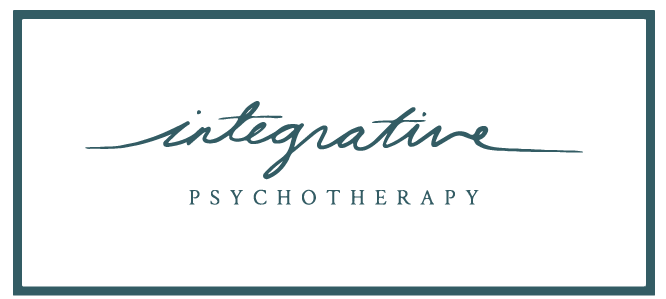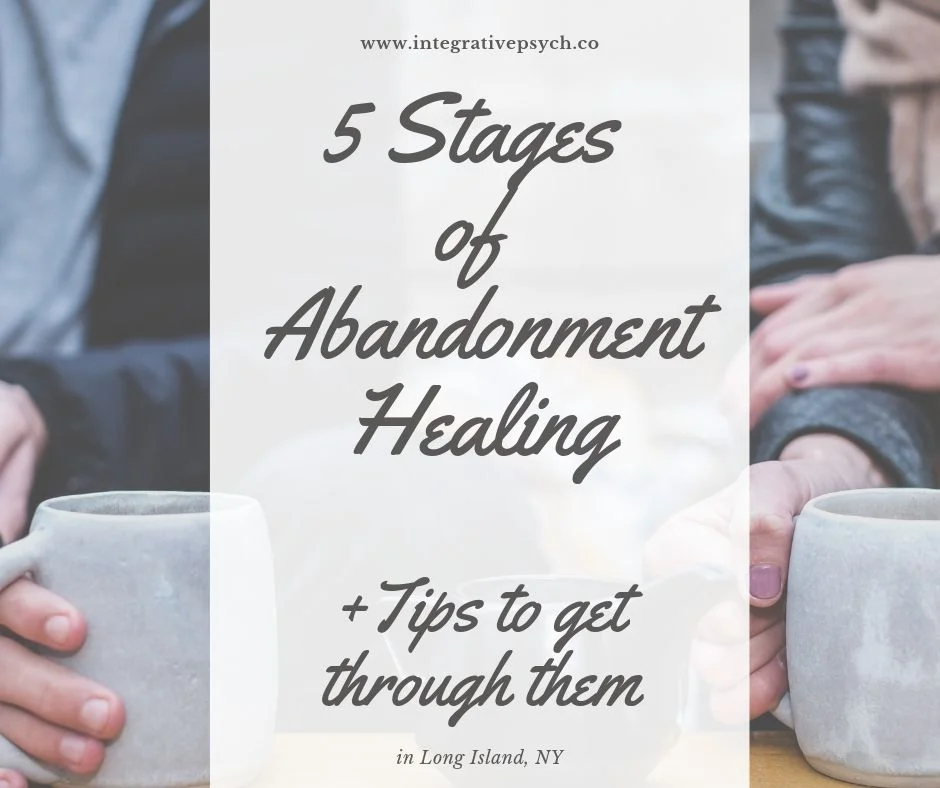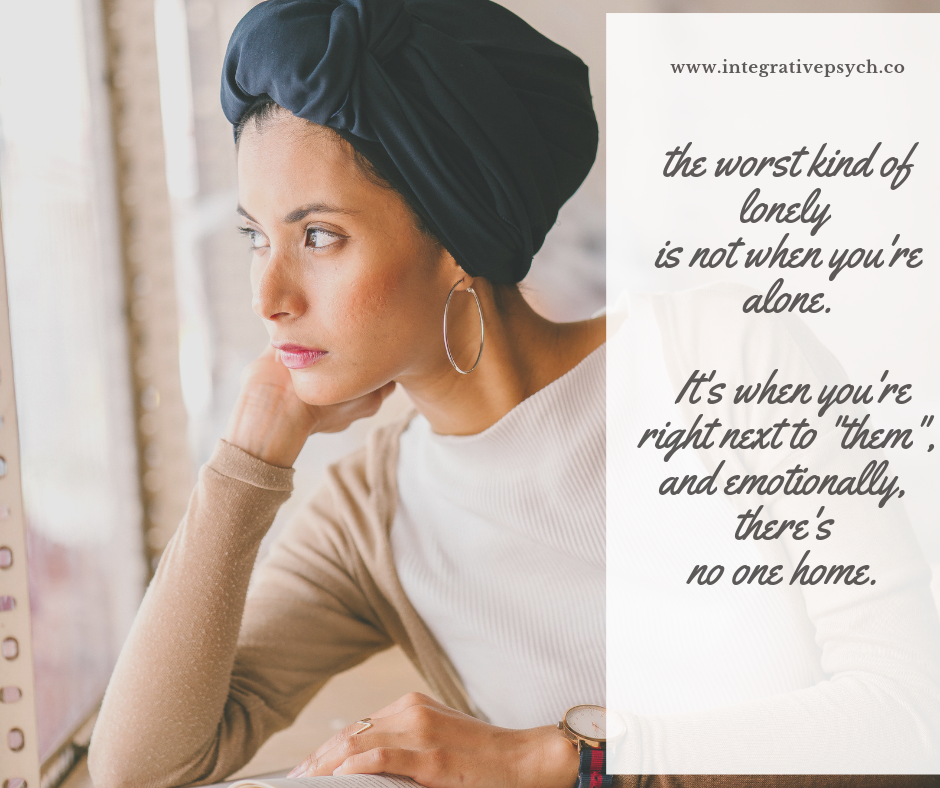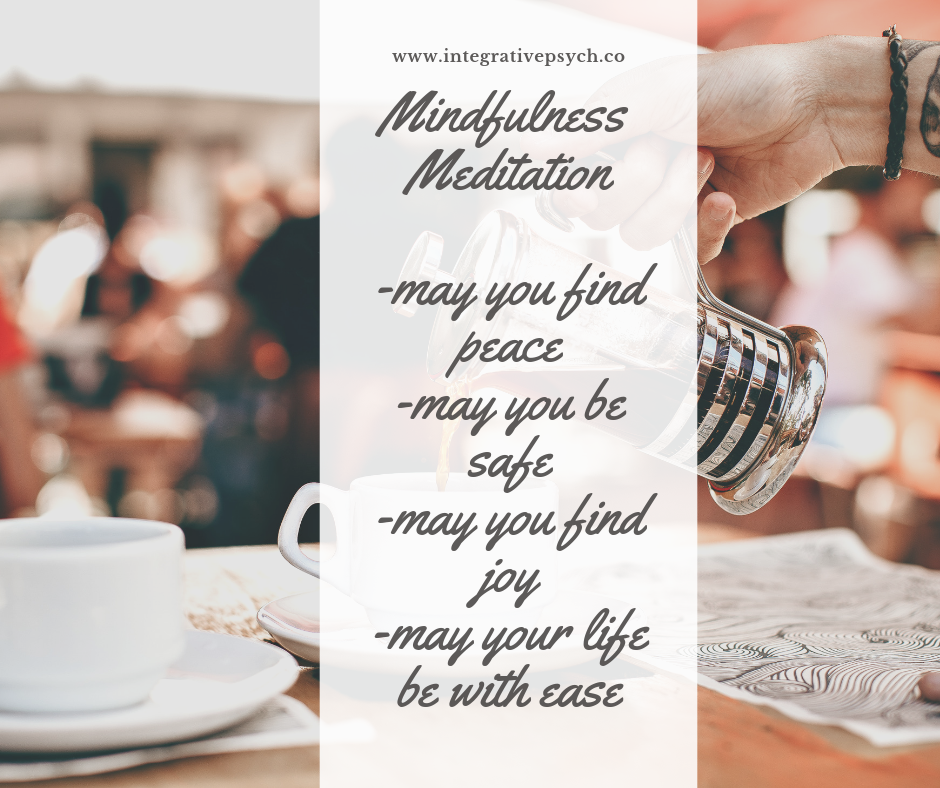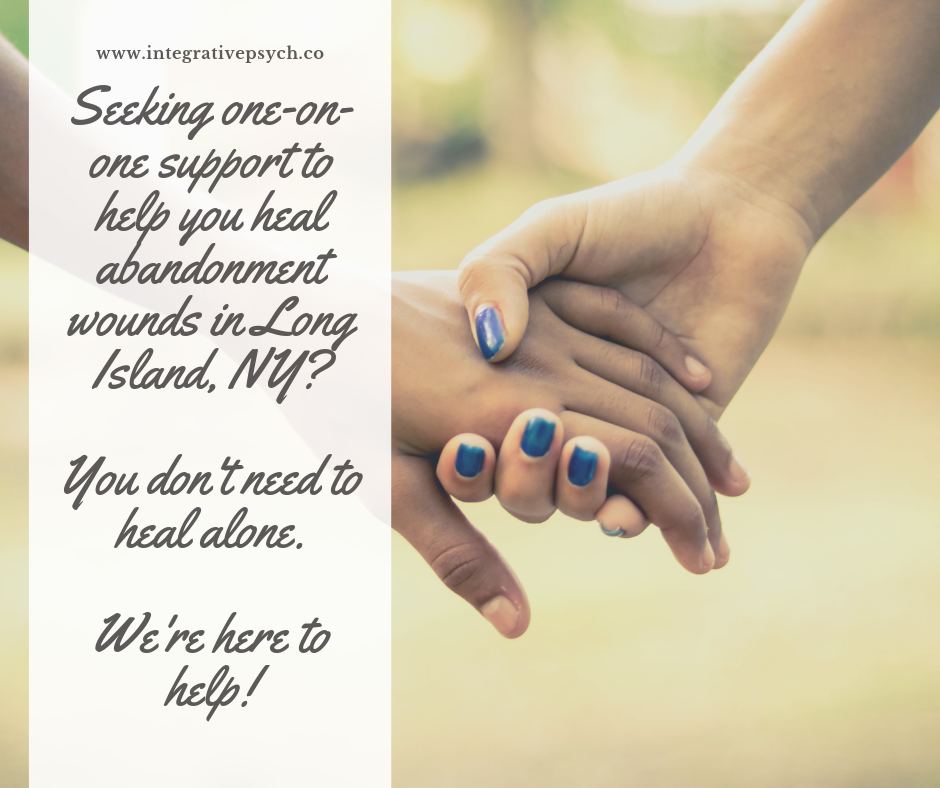The 5 Stages of Abandonment Healing in Long Island, NY
Counseling in Five Towns of Long Island, NY for anxiety, trauma and abandonment issues.
When you say the word “abandonment” what comes to mind? The baby left at the fire station, unloved? Sweet children in an orphanage, waiting for a warm embrace? Though those images provoke a tinge in our heart, abandonment is a universal experience, not one just experienced by those whose abandonment grief is obvious to the eye {and deeply painful}.
Abandonment is a primal fear to all, a fear of being isolated, and alone.
It’s why we get so choked up over breakups, family feuds, premature deaths and losses. It’s why our hearts feel broken, betrayed or confused when we lose a loved one, have a falling-out with a dear friend, end a love relationship or experience a sudden change in our professional identities or roles at work; often, these are joined with thought of self doubt and wonderings about our level of worth.
Death & Abandonment: When we lose a loved one to death, abandonment deepens our grief because we’re left feeling forsaken, left behind and alone. The ones alive are left with the unresolved conflicts, the words unspoken and the loose ends of the relationship that had never fully been tied up.
Loss of Love, Childhood Trauma and Adult Wounds: And when we lose love, be it due to break-ups, or lack meaningful connection due to tending to wounds from childhood, teenage-hood or recent adulthood traumas, we can feel out of control, and wondering about our sense of belonging. And if you’re like some, you may vacillate between feeling isolated to getting involved in relationships where you’re perpetually abandoned {emotionally, physically, energetically, verbally} again and again.
A word about Emotional Abandonment: Emotional abandonment is where nothing “external” has shifted, but “emotionally” things have shifted significantly. For example, when someone withholds their warmth, love or care from you, or when someone who is meant to care for you uses alcohol, substances or is chronically busy or disconnected, leaving you feeling isolated and existentially alone in the world. This kind of coldness can leave you feeling confused because you haven’t “lost your lover” “grieved a death” or been “left by your caregiver”, but your heart and psyche speak the language of love and can feel the lack of warmth. You’re not crazy. Your wounds are equally important.
Abandonment is an invisible wound that implants a deep emotional drain when not tended to properly.
Abandonment wounds leave us feeling like we need to hold-on, fearing disconnection, worrying about future disappointments and worrying about potential threats and losses, leaving us feeling perpetually insecure and doubtful in ourselves, in relationships and in the world.
Shifting from fear-based living to rebuilding trust and inner stability.
If you’re experiencing abandonment due to grieving a death, have recently broken up with your lover, are processing a recent job loss, are healing from a childhood wound or recent trauma that’s impinging on your emotional wellbeing, or if you have lost your sense of purpose, you’re not alone. Each of us have experienced some form of loss, some greater and some smaller, but all valid. And, however much pain you’re in, know that you can take a step today towards healing.
What healing abandonment looks like
Healing the hurt of your wounded heart due to abandonment grief requires warmth, creativity and imagination. You become the narrator and dictator of building on your adversity and creating growth and possibilities to heal your wounds.
Overcoming the Trauma of Abandonment
5 Universal Stages - S.W.I.R.L.
By Susan Anderson
Shattering, Withdrawal, Internalizing, Rage, and Lifting. Each of these stages relate to different aspects of human functioning and trigger different emotional responses. The first letter of each of these words spell SWIRL, a great description of the cyclonic nature of the intensity of healing abandonment.
It’s important to note that these stages aren’t linear; as you can move through one and the other at the same time- and all of this is part of the inexorable process of healing.
1} Shattering
“I’ll aways be alone”, “I’ll never find love”, “I’ll never have a position I like”, “I am never heard, It’s no use trying”.
Here you are feeling the impact of the loss or hurt. You experience a stab-like wound to your heart, literally, feeling like you’re shattering. You’re taken by shock and are left bewildered by the disconnect, pain and hurt. What’s being “attacked” is your attachment system, feeling threatened and unsafe. This can be due to the loss of a loved one, and you’re suddenly feeling alone, unclothed from protection in the world around.
Or, it may be after being informed of a loss, break-up or being emotionally ignored; you’re left feeling helpless, confused and abjectly alone. In this phase you can feel waves of despair and sorrow, unsure of what the next moment will bring, though you may also experience brief glimmers of hope as well.
When we feel our emotional supports are being threatened or are robbed from us, we get fearful.
What you can do: Allow yourself to ride the emotional waves, and know they will not last forever, but they are important to experience for this phase. Take consistent steps to becoming a resource to yourself in this storm. Practicing the words from a Healing Meditation such as “May I be Present, May I be Well, May I be Calm, May I find Peace” while simply noticing your physical sensations of breathing. This is a beginning step to restore balance, and self regulation.
2} Withdrawal
Withdrawal is when you are yearning and craving the person, relationship, role or object that is no longer there. You may feel plagued with anxiety about the loss, wanting to hold on to the remnants of what you do have left, leaving you feeling exquisitely vulnerable.
This is often related to the withdrawn of love {or hope} that came along with a person being in your life, and it is no longer there. This is called withdrawal because your physical body will often have symptoms that are flu-like, as you are flooded with fight or fight hormones to navigate this emotional process. Your withdrawal may come along with nervousness, anxiety, jumpiness or nausea. You “lens” becomes about surviving the day, and about breathing through the pain of each moment.
What you can do: Ground yourself and Separate from the whirlwind of chaos, and terror of loss.
Get in touch with your capacities of your mind by noticing which thoughts you’d like to hold onto, and which you’d like to let go of. Imagine physically separating yourself from the tornado of the exact experience you’re enmeshed with {a break-up, a home loss, a job shift, an emotional rift} and make your own inner child the object of care you’re tending to.
This is no easy task, but visualization is a wonderful tool to begin helping you notice that you are not this situation, but rather, you’re experiencing it.
You are not this experience, you are simply going through it.
By separating your self from that situation, you will lessen the intensity.
Within the pain, you do not need to self-abandon. This is where you get to shift to personalized self-reliance and self-care and focus the intensity of your emotions inwards.
Tend to your routine of eating, sleeping, praying, socially interacting or physical movement even if it feels like a exhaustive job, because you’ll be creating a soothing structure you most need right now. Doing this reminds your mind + body that you can and will give it what it needs, to the best of your ability.
3} Internalizing
Internalizing is where you internalize the rejection, making it personal, often using it as “proof” that you’re unimportant or not “good enough”. You turn your anger inward and blame yourself for losing someone you love, for feeling unlovable and questioning your worth. This is a where you can cause scarring to your self-image and develop doubts about your attachment worth. You might notice old insecurities bubbling up due to this recent loss.
What you can do: To reverse the potential damage of this phase, you’ll need to create a mental refuge for your mind, heart and brain. Create a mental image of your future self and use it as an anchor you’re working towards.
Imagination and creativity need to become your imaginative best friends here because current reality isn’t holding the image of what your life can be like.
Abandonment makes you lose your belief in healing and change, and though it’s almost impossible to believe it, your life is definitely capable of expansiveness, love, connection and goals way beyond the reality you’re currently facing.
Create a 3D Mental Canvas of a brighter future self- it’ll be a beacon of light.
You’ll still face doubt and worry, but when you create a strong steady mental image in 3D about your future life {and it can be future as in 3 days, 3 months or 3 years}, it’ll serve as a beacon of shining light that shines through the clouds and let’s you know there’s something above all of this bleakness.
Even if only for a few seconds a day, practicing conjuring up this image- it’s like a mental gym for your brain, and from a neuro-biological perspective, you’ll internalize the image from the inside-out and uncover newfound energy to set goals and shift your life direction.
4} Rage
Rage is intense anger that comes out as an expression about the injustice of the situation you’re in. You’re feeling agitated and restless, desperate to get your life back on track. Your anger is appropriate and letting you know something isn’t right. However, it may unconsciously express itself as low distress tolerance, moodiness, anger outbursts or even fantasies about revenge. You’re attempting to regain your ego strength and stabilize your world again. You may do this by acting out from your Outer-Child by getting involved in self-sabotaging patterns, by getting angry with loved ones who are trying to help or by getting inwardly explosive on your own self.
What you can do: Harness a steady sense of assertiveness so you can stand up for yourself. Rage often comes out of fear that you’ll under-react or become dismissive and you’ll be left susceptible to future abandonment or stuck in constant approval seeking; which is downright scary.
Turn Anger into Balanced Assertiveness and Empowerment
Come up with a narrative and understanding about what you’ve lost, that ways you’ve been wronged and the inexplicable pain. You can do this on your own, with a close friend or in the healing space of therapy.
Validate the reality and give it a platform; giving your story air-time will stave off depression that comes from inverted rage, and allow it to move through you instead of getting stuck inside. Then, with knowledge and truth of your reality, use this spark of energy to become ferociously committed to creating healthy habits { such as sticking to new boundaries, speaking up, attending therapy, or even advocating for others} that promote impactful, healing change.
5} Lifting
Lifting is where you begin to feel intervals of relief from the pain and grief. You begin getting distracted by life and slowly feel more confident over time. The weight of the experience begins feels just a bit less heavy and you feel as though you are finding your way through to another chapter of life.
What you can do: Take time to learn the lessons you’ve learned from the abandonment, isolation or pain so that you can face your next love, possibility, friendship or situation with more wisdom, confidence and knowledge. Pain makes us wiser, and better able to navigate the next chapter of life.
A note about Attraction to Emotionally Absent People
However, beware if you’ve jumped through some loopholes of recovery and have gone through the lifting stage prematurely; If you’ve numbed or disconnected in order to “get through”, you may find yourself isolating, or feeling like you’ve lost your capacity for connection. Or, you may become attracted to emotionally unavailable people - the term for this is abandohlic. This happens when you haven’t processed your pain, therefore you’re unconsciously “magnetic” to rejection and insecurity because those are emotions you’re needing to process.
However, if you’ve dug in, felt the “feels” and are moving through the process, you’ll be feeling movement into a more wholesome place. And remember, it’s normal to go back and forth between a phase or two, or experience a few at a time, as this is a swirling process that you can cycle through in days, months or years.
As you move through the healing, you'll be slowly transforming, into a newer version of self.
You’ll realize that SWIRL is something we all go through. It’s what helps us get through life as we move through daily disconnections, navigate life after childhood wounds or recent disappointments. We each have our own unique way of swirling based on our temperament and personality.
A word about “silent” sw.i.r.l.s
If you’ve been through some form of abandonment as a child or adult, you’ll probably be more sensitive to subtle forms of abandonment. It can be something like feeling ignored, left out or not being recognized at work or in a social situation. Notice if there are sensitive feelings that cause you to overreact, feel rejected, be swept in self-doubt or feel angry. And then, remind yourself that this is a normal reaction given your sensitive history, and check if you can practice one of the above steps.
You can recover starting now
Abandonment recovery is possible, and can even make you into a more evolved person. Many times we get in our own way, getting stuck in cerebral cortex overthinking analyzing and obsessing about pain. However, healing lies in letting go of the mathematical equation and allowing the healing powers of the body to repair our hurts.
For today, I invite you to get curious about what phase of SWIRL you may be in. Give yourself the space to process and take steps to self-care throughout the phases of healing, be it a few days, months or a lifetime of evolving work. You’ll be taking steps towards the greatest gift; living a more joyous life.
Reading this and resonate with some of what you’re reading?
Do you live anywhere in New York, or somewhere on Long Island and looking for one-on-one support to help you create a focused, individualized plan to your emotional healing?
At Integrative Psychotherapy we help clients heal from anxiety, depression, trauma and abandonment wounds using scientific based methods including EMDR, Sensorimotor Psychotherapy, Psychodynamic Therapy, Parts work and Expressive Arts. We help you to experience short term relief as well as relief that lasts way beyond your time in the therapy room.
Reach out below to schedule your free 15 minute consultation.
